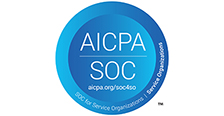
-
January 1, 1900
Partnership Agreements: It's in the Drafting
by Nicole Perdoni-Byrne
The partnership agreement is the key document in dictating the terms, conditions and governance of a partnership. While such an agreement is analogous to a contract negotiated between the partners of the partner- ship, the Uniform Partnership Act (“UPA”) contains certain statutory requirements that must be contained in a partnership agreement and cannot be modified or contradicted through negotiation. When a partnership agreement fails to provide for certain terms, the UPA provides for statutory gap fillers that will dictate and provide guidance under certain situations. There is some room for creative drafting when creating these agreements, but the drafter must always keep the provisions of the UPA in mind.
Statutory Prohibitions
N.J.S.A. 42:1A-4 provides that “relations among the partners and between the partners and the partnership are governed by the partnership agreement.” But that same statute sets forth certain things the partnership agreement cannot do. It cannot unreasonably restrict the right of the partners to access the books and records. The agreement cannot reduce the duty of loyalty to the partnership and by the partners, proscribed by the UPA, in order to allow a partner to engage in conduct intentionally injurious to the partner- ship, nor can it unreasonably reduce the duty of care required to be given to the partnership. It cannot provide contrary rights of the court to expel a partner nor can it change the requirements set forth in the UPA to wind up the partnership business in certain instances. Pertaining to the limited liability partnership, the agree- ment cannot vary the law pertaining to this type of entity. The partnership agreement cannot restrict the rights to third parties provided for in the UPA.
Statutory Gap Fillers
There may be instances when a partnership agreement fails to provide for important and necessary terms that govern the partnership. The UPA provides provisions to fill those gaps. For instance, a partnership agreement may be silent as to who has authority to bind the partnership. The UPA provides for this situation in NJSA 42:1A-13, wherein section (a) states that “each partner is an agent of the partnership for the purpose of its business. An act of a partner ...for apparently carrying on in the ordinary course of the partnership business or business of the kind carried on by the partnership binds the partnership.” This apparent authority is negated in situations where the person with whom the partner was dealing knew the partner lacked the necessary authority to act on behalf of the partnership or received notification of same. Section (b) states that when a partner’s act is not apparently for carrying on in the ordinary course of partnership business, his or her act will only bind the partnership if such act was authorized by the other partners.
Questions will naturally arise as to how to quantify “other partners” when deciding what, in fact, is the ordinary course of business for a particular partnership and when is an act outside of the ordinary course of business an authorized act. NJSA 42:1A-21 sets forth a partner’s rights and duties within the partnership. Section (j) states that when a difference arises among the partners as to a matter in the ordinary course of business it shall be decided by a majority of the partners. This Section goes on to state that an act outside the ordinary course of business of a partnership (and an amendment to the partnership agree- ment) shall be undertaken only with the consent of all of the partners.
Conclusion
The partnership agreement is a document that the partners should take great care in drafting. While it can be treated as any other contract, terms of which can be negotiated between the parties, there are certain rights and requirements proscribed by the UPA that cannot be bargained for or negotiated away. On issues that fail to be addressed by a written partnership agreement, the UPA provides for gap filler provisions in order to resolve any open issues among and between the partners. Included in these gap filler provisions are statutes pertaining to control and authority of the partner ship. It is best to consult with your attorney to assure that you fully memorialize and carefully draft the partnership agreement to provide for the complete understanding of the partners of the partnership.
Nicole Perdoni-Byrne is an associate at Hill Wallack LLP where she is a member of the Real Estate Division and the Banking & Secured Transactions Practice Group. She concentrates her practice in all matters of banking and secured transactions, including: acquisition finance, construction financing and refinancing, loan modification, restructuring, loan documentation, workouts, foreclosures and closings.


